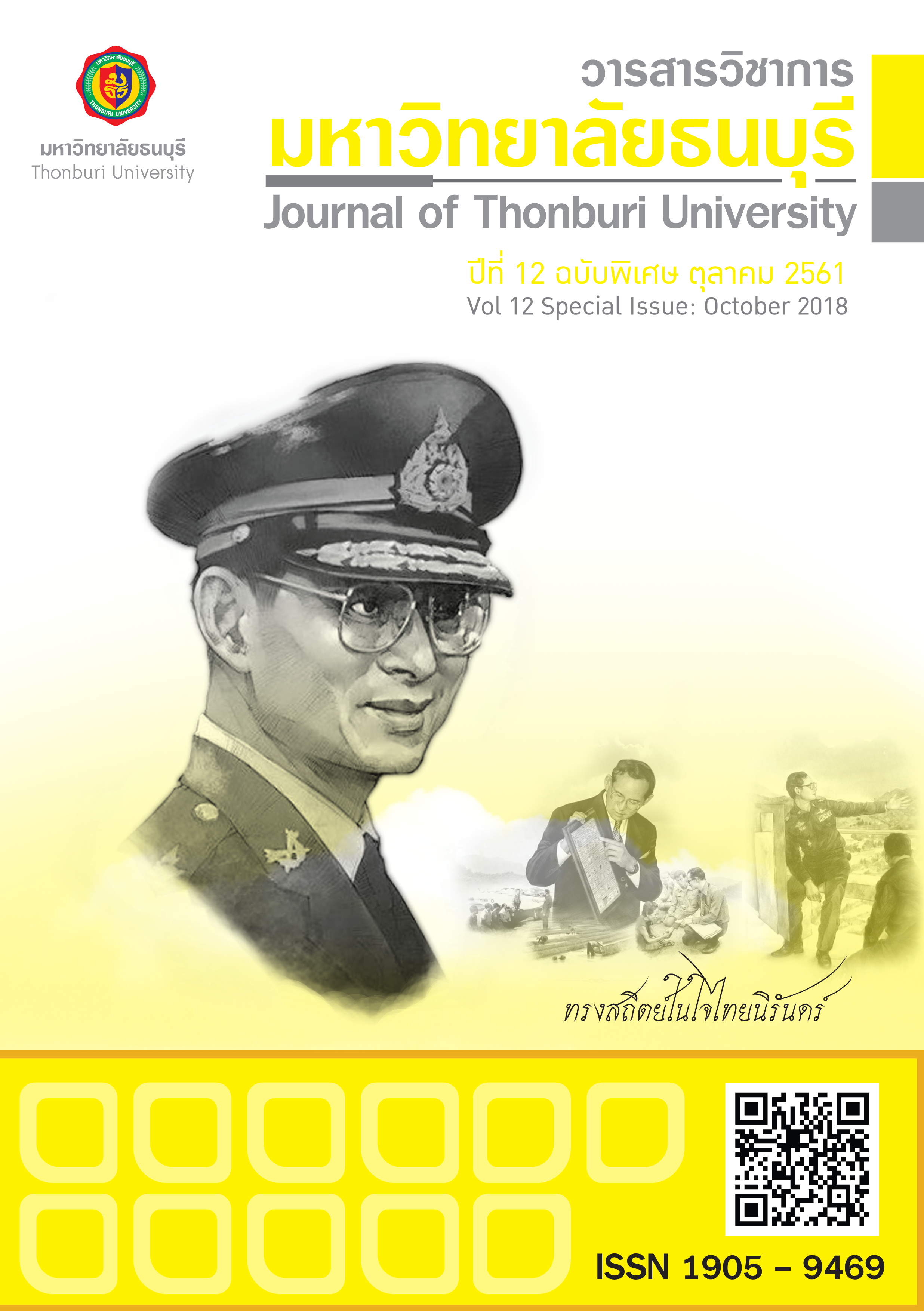A REVIEW Of EDUCATIONAL COMMUNICATION MODEL A PRACTICAL TEACHING IN THE THAI CLASSROOM GUIDE
Keywords:
The Educational Communication Model, Learning and Teaching in Thailand, Communication in the Thai classroom, Intercultural communication Learning Innovation and TechnologyAbstract
Abstract
Educational communication is a process of exchange of facts, ideas, opinions, and means that individuals or organizations share the meaning and understanding with one another. There is a significant relationship between classroom communication and students' learning outcomes. The learning process itself is a part of the communicative process; it is a two-way interaction. Therefore, effective communication between the teacher and students is necessary for academic achievement in multicultural communication generation. . In summary, The Educational Communication Model involves a process where teachers (sources) establish objectives (encoding), create messages to teach skills necessary to achieve objectives, send these messages through suitable channels to students (receivers) who provide feedback that affect to learning innovation and effective communication is a part of effective teaching. The practical teacher can accurately identify students needs, addressing those needs at the appropriate level, and create a relaxed learning environment where open discussion is possible and welcome. There is higher success rate in learning outcomes.
Keywords: The Educational Communication Model, Learning and Teaching in Thailand, Communication in the Thai classroom, Intercultural communication Learning Innovation and Technology
References
Barnlund, D. C. (2008). A transactional model of communication. In. C. D. Mortensen (Eds.), Communication theory. 2nded. (pp 47-57). New Brunswick, New Jersey: Transaction.
Baumgart, N., & Halse, C. (1999). Approaches to learning across cultures: The role of assessment. Assessment in Education: Principles, Policy & Practice, 6 (3): 321-339.
David Berlo. (1960). Process of Communication: An Introduction to Theory and Practice. Cengage Learning. Flannery, T. J. (1995). Developing lesson plans. Fire Engineering, 148: 16-18.
Gravois, J. (2005). Teach impediment. The Chronicle of Higher Education, 51 (31): A10.
Gudykunst, W. B., & Kim, Y. Y. (1992). Communicating with strangers: An approach to intercultural communication. 2nded. New York: McGraw-Hill.
Hofstede, G. (2005). Cultures and organizations: Software of the mind. New York: McGraw Hill.
Knutson, T. J. (2004). Thai cultural values: Smiles and sawasdee as implications for intercultural communication effectiveness. Journal of Intercultural Communication Research, 33 (3): 147-157.
McCroskey, J. C., Richmond, V. L., & McCroskey, L. L. (2006). Introduction to communication in the classroom: The role of communication in teaching and training. Boston: Pearson.
Phondee, Samran. (2016). A model of setting thonburi-learning center. Journal of Thonburi University. 10(21): 127.
Settachai Chaisanit, Apichai Tra-ngansri, Luddawan Meeanan and Chiraphorn Chomyim. (2015). Learning Culture, Norms and Values through Interactive Simulation Learning Environment. 4th International Conference on Education and E-Learning (ICEEL). Hong Kong. November 28, 2015.
Settachai Chaisanit, Punchanit Phangphol, Chiraphorn Chomyim, Napatwadee Sangboonnum Hongthong and Nawarat Kamsiang. (2017). Problem Conditions in Learning Media and Instructional Technology of Anubanchonburi School. SPUC International Conference 2017 Research and Creative Solution for AEC Identities for Thailand Development 4.0. Chonburi, Thailand. June 29, 2017.
Settachai Chaisanit, Orawan Riwsawai and Apichai Trangansri. (2014). Design and Development of an Educational 3D Virtual Reality into Language Learning. International Conference on Advanced Engineering Technology (ICAET 2014). Incheon, South Korea.
Shannon, C. E. A (1949). Mathematical Theory of Communication. Bell System Technical Journal. 27: 379-423, 623-656.
Siriporn Mikum, Surachai Suksakunchai and Settachai Chaisanit. (2013). Factor Analysis of Problems in Learning Activities on Fundamental Computer Programming. E-Learn 2013 World Conference on E-Learning. Las Vegas, Nevada, United States.
Thanongsak Sovajassatakul and Settachai Chaisanit. (2017). Concepts and Principles of Assistive e-Learning System with Multinary Learning for Hearing-Impaired Students. 5th International Conference on Software and Information Engineering (ICSIE 2017). Tokyo, Japan. May 11-12, 2016.
Van der Zee, R. I., & Van Oudenhoven, J. P. (2001). The Multicultural Personality Questionnaire: Reliability and validity of self- and other-ratings of multicultural effectiveness. Journal of Research in Personality. 35: 278-288.
Vargas, J. S. (2009). Behavior analysis for effective teaching. New York: Routledge.







